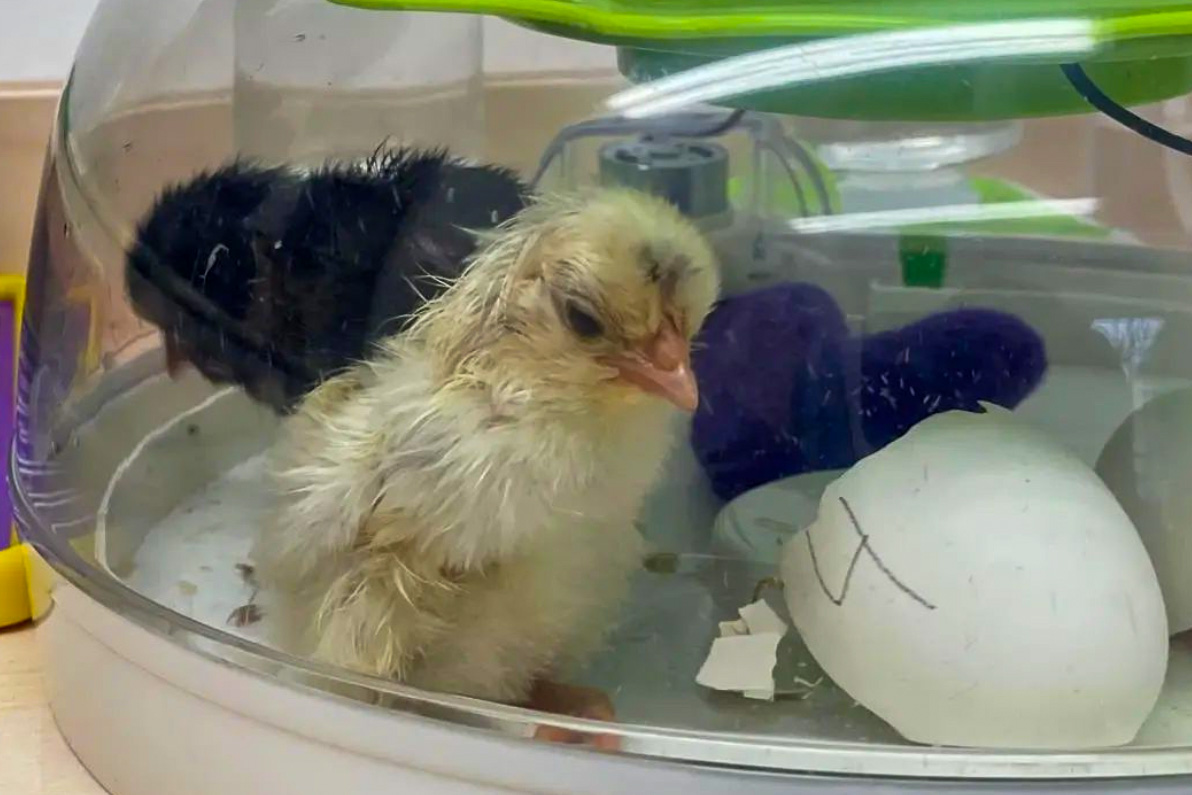Emerging from their shells, the hatchlings in Key Biscayne drew amazed stares from their preschool onlookers earlier this month, wobbling under the protective dome of an incubator. The pair, the offspring of birds named Juana and Lemon Pepper, are the latest additions to the Key Biscayne Presbyterian School’s small chicken farm.
But while the chicks are part of basic biology at the school, the teachers might want to perhaps add a lesson about “egg-onomics.” That’s because worldwide egg prices remain at near-historic highs, and inflation isn’t the only cause.
In the United States, the average price of a dozen eggs was $2.99 in February, down from $4.21 last year, according to government data. Still, that’s significantly more than the $1.59 cents per dozen consumers were paying in February 2021.
And if you think that’s egg-stravagant, they’re even pricier in Key Biscayne, where a dozen large eggs will set you back $3.89 at Winn-Dixie, 30% higher than the national average.
It’s a market that’s been scrambled by disease, high demand and growing costs for farmers.

While global prices are lower than they were at this time last year, they remain elevated, said Nan-Dirk Mulder, a senior global specialist with Dutch financial firm RaboBank’s RaboResearch Food and Agribusiness division. Mulder doesn’t expect them to return to 2021 levels.
One major culprit is avian flu. Outbreaks of the deadly respiratory disease were reported in Europe, Africa and Asia in 2020 and spread to North America in 2021. In 2022 alone, more than 131 million poultry worldwide died or were culled on affected farms, according to the World Health Organization.
Outbreaks are continuing. In December, the U.S. confirmed cases in 45 commercial flocks and 33 backyard flocks, affecting 11.4 million birds, according to the U.S. Department of Agriculture.
Even when avian flu dissipates, it can take a long time for the egg market to settle. It takes a farm three to six months to replenish a flock, so during that time, egg supplies are lower and prices rise, said Emily Metz, president of the American Egg Board, a marketing organization.
If farms restock with too many chickens, it can drive prices down. That’s what happened in the U.S. last summer when egg prices plunged to $2 per dozen.
“It’s supply and demand searching out. You have to have a profitable price,” David Anderson, a professor and extension economist for livestock and food marketing at Texas A&M University, said.
And profits can be hard for farmers to come by during periods of inflation. Chicken feed represents up to 70% of a farmer’s costs, and feed prices doubled between 2020 and 2022, Mulder said. Weather, COVID-related disruptions and the war in Ukraine – which drove up the price of wheat and other crops — were all contributors.
And government regulations play a part in lifting egg prices. Multiple states, including California and Massachusetts, have passed cage bans for egg-laying hens since 2018; this year, bans are set to take effect in Washington, Oregon and Michigan.
Converting to cage-free facilities is a big investment for farmers, and consumers may not always realize that’s a factor in the higher prices they see at the grocery store, Metz said. She anticipates such conversion costs will eventually fall as more farms make the changeover.
In the U.S., egg prices are expected to decrease around 2.8% this year, according to the U.S. Department of Agriculture. That won’t put them back to pre-COVID levels, but it should give some relief.
“People really love eggs, and they notice when that price fluctuates,” Metz said. “Our farmers wish it wasn’t such a sharp up and down as well. It makes everything challenging.”
Back in Key Biscayne, the preschool chickens are making their own economic contribution.
Director Anne Roth said the school recently auctioned off three dozen eggs for a fundraiser. The chickens even have their own social media – an Instagram account – “therealchickensofKBPS.”
Next up? A school-wide vote this coming week to name the two new chicks.
By Dee-Ann Durbin AP Business Writer. KBI’s Tony Winton contributed to this report.
This story was updated to indicate higher price of eggs found in a store check.
=


